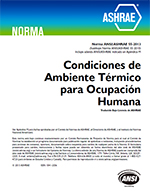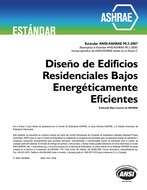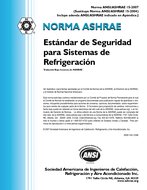Description
Track: Residential Buildings: Standards Guidelines and Codes
Sponsor: 2.8 Building Environmental Impacts and Sustainability, 4.4 Building Materials and Building Envelope Performance, Residential building committee
Chair: Audrey Dupuis, Member, Pageau Morel, Montreal, QC, Canada
In high performance homes, comfort drives design, design drives energy use and careful design choices drive actual energy performance and occupant satisfaction. However, thermal comfort standards don’t include energy efficiency compliance requirements, leading to mismatches between comfort and energy efficient designs. This seminar explains why and how to use the vocabulary of thermal comfort as the first solution in solving residential energy problems. It also describes how feedback tools can be useful in calibrating modeling inputs to verify and ensure that actual performance outcome are achieved by design. The cost of poor design choices is also discussed.
1. Feedback Tools for Designing and Implementing Comfortable Efficient Homes
Dan Perunko, Balance Point Home Performance, Nevada City, CA
Designing comfortable and efficient homes requires that designers and installers set performance targets and revise their designs to meet those performance targets. If modeling is used to predict enclosure performance or potential comfort, other tools must be used to verify that the modeled assumptions are achieved. Those same tools can be useful in calibrating inputs for future designs to assure performance outcome is achieved. Ongoing performance feedback is now realistic for residential applications. This presentation focuses on lessons learned from those feedback tools and how to use them to enhance performance outcomes in future designs.
2. Which Should Come First in Housing, Energy Efficiency or Thermal Comfort?
Robert Bean, Member, Indoor Climate Consultants Inc., Calgary, AB, Canada
This usually comes as a shock to energy geeks, but compliance requirements found in efficiency programs are not found in thermal comfort standards. Furthermore, energy related terms like U-values, conduction, air changes, kilowatts, therms and thermal bridging are abstract constructs for the general public. But the vernacular language of cold, hot, dry, humid, muggy and drafty needs no communication effort. This presentation explains why and how to use the vocabulary of thermal comfort as the first solution in solving residential energy problems.
3. The Energy and Environmental Benefits of Design Choices that Provide Excellent Comfort
Jim Larsen, Cardinal Glass Industries, Eden Prairie, MN
Design choices for home envelopes and appliances have a large impact on comfort, energy consumption and environmental impact. A positive impact requires a well-considered design objective as well as its successful implementation. This presentation provides examples of affordable design choices that combine superior comfort with significant life cycle cost benefits, reduced primary energy consumption and reduced greenhouse gas emissions. It focuses primarily on the role of the envelope in providing affordable and environmentally beneficial comfort for the occupants, but also illustrates the synergy with smaller equipment selection and better comfort control when the envelope is optimized for efficiency.
Presented: June 27, 2017, 8:00-9:30 AM
Run Time: 90 min.
This is a zip file that consists of PowerPoint slides synchronized with the audio-recording of the speaker (recorded presentation), PDF files of the slides, and audio only (mp3) for each presentation.
Citation: ASHRAE Seminar Recordings, 2017 ASHRAE Annual Conference, Long Beach , CA
Product Details
- Published:
- 2017
- Units of Measure:
- Dual
- File Size:
- 1 file , 67 MB
- Product Code(s):
- D-LB17Sem31




